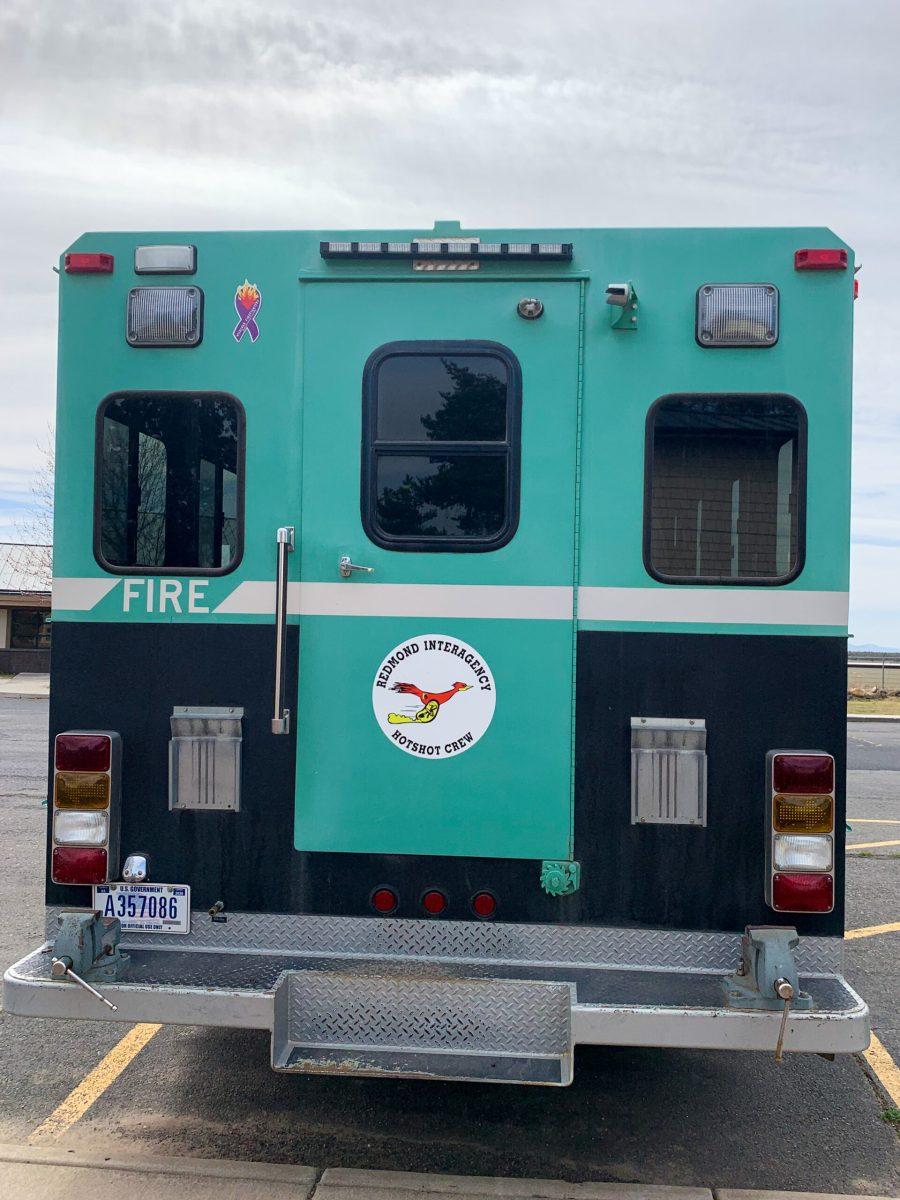Sarah Lightley/The Broadside
Fighting wildland fires is a big commitment of long days and hard work. There are over one hundred interagency hotshot crews in America, the most highly skilled type of hand crews that are typically assigned to work on the most challenging parts of wildfires. The Redmond Interagency Hotshots is one of four hotshot crews with leadership development programs embedded in their training.
A conventional Hotshot crew has 20 members, but the Redmond Hotshots have 21 this year. These recruits/detailed crewmembers are from across the nation and will go through four weeks of training in the classroom and the field before engaging in wildland firefighting.
Gabe Mason, the Redmond Hotshot Superintendent, describes what some of the training would look like.
“Critical Training would be things you have to get refreshed on every year, deploying a practice fire shelter, programming a radio in the field, loading onto a helicopter. This is critical training that we all need to know how to do,” Mason said. “Leadership 380, which is a week-long class, is about team development and leading small groups and teams.”
A staff ride is also where a crew goes to a past wildland fire site or historic battle that an incident occurred. A staff ride consists of a preliminary study of the event, a site visit to the actual ground associated with the event, and an integration phase in which firefighters derive lessons from the event.
“The staff ride, that is about corporate knowledge about why things happen and what we could learn going forward,” Mason said.
Once the crew is available to support on fires, everyone has their bags packed and ready to go.
A hotshot crew is a self-sufficient module. Crew members should be able to go to a fire somewhere and survive for three to five days with food, water, supplies, gas, and batteries.
“The red bag is your two-week house that should have all of your creatures comforts to survive for two weeks, including a sleeping bag, tent, clothes, and toiletries. I obligate that it is 35 pounds and highly packable,” Mason said.
After dispatch calls, the crew grabs their bags and equipment and prepares to head out to the fire location. There are many ways to transport a team to a wildland fire. The Redmond Hotshots utilize two crew buggies. On average, the crew buggies travel around 20,000 miles in a four-month window during the summer fire season. They also travel to wildfires via airplane to locations outside of the Pacific Northwest.
Mason said, “A hotshot crew has two buggies, ten-person buggies, and then the superintendent truck and a UTV.” “If we fly, we would take all the saws, GPS, and radios and figure out the vehicles when we get there.”
When the crew gets to a fire, they are given objectives by an incident commander, or Mason comes up with the objectives. Then the team decides how to implement them. Gabe Mason figures out what resources they need to fight the fire and will order them.
“Once the plan is activated, we have sawyers clearing the way with saws and diggers following up. Ideally, we like black to the line, so we have to implement burnout procedures so we can get black to our line, just for security sake,” Mason said.
People with chainsaws clear fuel and underbrush out of the way. Diggers clear out the duff layer “to get down to mineral soil that won’t burn.” Firefighters have to learn different tactics because when traveling to other states, the vegetation can be different from Central Oregon.
Mason said, “There are a lot of roles you get to play in the fire community: who is talking with the aviation, who is working with the heavy equipment, who is working with the falling modules, and a hotshot crew could provide all of that middle management.”
When fires get big enough for multiple fire crews to be dispatched to fight them, a fire camp could be set up. A fire camp is used as a centralized base for support personnel, maps, fuel, food, and other things that the firefighters could need for fighting fire for long periods of time.
“Fire camp is a marvel, imagine a fire in a part of the world that rarely sees tourists, and within a couple of days at best, you can set up a fully functional chow hall, laundry, shower, telecommunication system to support potentially 700 people,” Mason said.
“It’s like a city that erupts and dissolves just as quickly. It’s your support network for the people on the ground.”
Gabe Mason encourages people to learn as much as they can about fire and the landscape, especially when living in a fire-adapted ecosystem such as Central Oregon. “Not everything you see on the news (about fire) is bad.”
This article is dedicated to the memory of Lance Honda, former Redmond Hotshot Superintendent.








